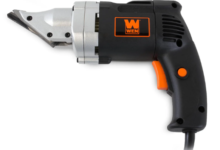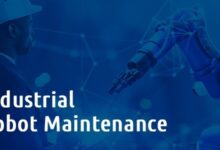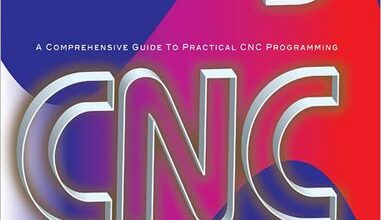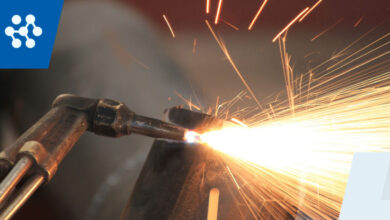The Evolution of Industrial Cutting Technology
Advertisement
Introduction
Industrial cutting technology has come a long way since its inception. From simple manual tools to advanced computer-controlled machinery, the evolution of industrial cutting technology has revolutionized the manufacturing industry. In this article, we will explore the history, strengths, weaknesses, and future prospects of industrial cutting technology.
Industrial cutting technology refers to the machinery and tools used for precision cutting of various materials such as metals, plastics, wood, and composites. The evolution of this technology has been driven by the need for increased efficiency, accuracy, and automation in the manufacturing process. Over the years, significant advancements in materials science, engineering, and computer technology have transformed industrial cutting processes.
One of the main strengths of industrial cutting technology is its ability to perform complex cutting tasks with high precision and speed. Modern cutting machines are equipped with advanced features such as laser cutting, water jet cutting, and CNC (Computer Numerical Control) systems, allowing manufacturers to achieve tight tolerances and intricate designs. This level of precision is crucial in industries such as aerospace, automotive, and electronics, where the quality of cut parts directly impacts product performance.
Another strength of industrial cutting technology is its versatility. Manufacturers can use cutting machines to process a wide range of materials, from soft plastics to hard metals, with minimal setup time. This flexibility allows for quick adaptation to changing production requirements and enables manufacturers to handle diverse projects with ease. Additionally, modern cutting machines offer multi-axis movement and automated tool changing, further enhancing their versatility and efficiency.
Despite its many strengths, industrial cutting technology also has some weaknesses that need to be addressed. One of the main challenges is the initial cost of investment in cutting machinery. Advanced cutting machines can be expensive to purchase and maintain, making them inaccessible to small businesses and startups. Additionally, the complexity of operating and programming cutting machines can be a barrier for companies with limited technical expertise.
Another weakness of industrial cutting technology is the risk of obsolescence. As technology continues to advance at a rapid pace, older cutting machines may become outdated and less efficient compared to newer models. This can lead to higher maintenance costs, decreased productivity, and a loss of competitive edge for manufacturers who fail to upgrade their equipment. To stay competitive in the market, companies must continually invest in the latest cutting technologies and training for their operators.
In conclusion, the evolution of industrial cutting technology has brought about significant improvements in precision, efficiency, and versatility in the manufacturing industry. Despite some challenges such as high initial costs and the risk of obsolescence, the benefits of advanced cutting machinery far outweigh the drawbacks. As technology continues to evolve, manufacturers must adapt and embrace the latest cutting technologies to stay ahead of the competition and meet customer demands.
FAQs about Industrial Cutting Technology
1. What is industrial cutting technology?
Industrial cutting technology refers to the machinery and tools used for precision cutting of various materials such as metals, plastics, wood, and composites. It includes processes such as laser cutting, water jet cutting, and CNC (Computer Numerical Control) machining.
2. What are the main types of cutting processes used in industrial cutting technology?
The main types of cutting processes used in industrial cutting technology include laser cutting, plasma cutting, water jet cutting, and mechanical cutting. Each process has its own advantages and limitations depending on the material being cut and the desired outcome.
3. What are the advantages of using industrial cutting technology in manufacturing?
The advantages of using industrial cutting technology in manufacturing include increased precision, efficiency, and versatility. Cutting machines can perform complex cutting tasks with high accuracy, speed, and repeatability, leading to improved product quality and reduced production time.
4. What are the limitations of industrial cutting technology?
Some limitations of industrial cutting technology include high initial costs, the risk of obsolescence, and the need for skilled operators. Advanced cutting machines can be expensive to purchase and maintain, and older models may become outdated as technology advances, requiring companies to continually invest in upgrades.
5. How can companies overcome the challenges of industrial cutting technology?
To overcome the challenges of industrial cutting technology, companies can invest in training for their operators, regularly maintain and upgrade their cutting machinery, and stay informed about the latest advancements in cutting technology. By keeping up with industry trends and best practices, companies can remain competitive and efficient in the market.
6. What is the future outlook for industrial cutting technology?
The future outlook for industrial cutting technology is promising, with continued advancements in automation, artificial intelligence, and materials science. Cutting machines are expected to become more intelligent, efficient, and autonomous, allowing manufacturers to further enhance their productivity and competitiveness in the global market.
7. How can businesses benefit from adopting industrial cutting technology?
Businesses can benefit from adopting industrial cutting technology by increasing their production capacity, improving product quality, and reducing production costs. Cutting machines enable companies to streamline their manufacturing processes, eliminate human error, and achieve higher levels of precision and consistency in their products.
Conclusion
In conclusion, the evolution of industrial cutting technology has revolutionized the manufacturing industry by providing advanced tools and processes for precision cutting of materials. Despite some challenges such as high costs and the risk of obsolescence, the benefits of using cutting machines far outweigh the drawbacks. To stay competitive in the market, companies must invest in the latest cutting technologies, training, and upgrades for their equipment. By embracing the advancements in industrial cutting technology, manufacturers can achieve higher levels of efficiency, quality, and innovation in their products.
Disclaimer
The information provided in this article is for general informational purposes only. While we strive to keep the information up to date and accurate, we make no representations or warranties of any kind, express or implied, about the completeness, accuracy, reliability, suitability, or availability with respect to the article or the information, products, services, or related graphics contained in the article for any purpose. Any reliance you place on such information is therefore strictly at your own risk.







